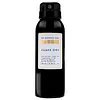What's inside
What's inside
 Key Ingredients
Key Ingredients

 Benefits
Benefits

 Concerns
Concerns

 Ingredients Side-by-side
Ingredients Side-by-side

Water
Skin ConditioningAlcohol Denat.
AntimicrobialPvp
Emulsion StabilisingGlycereth-26
HumectantGlycerin
HumectantPropanediol
SolventAloe Barbadensis Leaf Extract
EmollientCucumis Sativus Fruit Extract
EmollientTulipa Gesneriana Flower Extract
Skin ConditioningPolysorbate 20
EmulsifyingHydroxyacetophenone
AntioxidantEthylhexylglycerin
Skin ConditioningPentylene Glycol
Skin ConditioningMethyl Diisopropyl Propionamide
MaskingPanthenol
Skin ConditioningMaltodextrin
AbsorbentPhenoxyethanol
PreservativeWater, Alcohol Denat., Pvp, Glycereth-26, Glycerin, Propanediol, Aloe Barbadensis Leaf Extract, Cucumis Sativus Fruit Extract, Tulipa Gesneriana Flower Extract, Polysorbate 20, Hydroxyacetophenone, Ethylhexylglycerin, Pentylene Glycol, Methyl Diisopropyl Propionamide, Panthenol, Maltodextrin, Phenoxyethanol
Water
Skin ConditioningGlycerin
HumectantSorbitol
HumectantDipropylene Glycol
HumectantButylene Glycol
HumectantCitrullus Lanatus Fruit Extract
Skin ConditioningHyaluronic Acid
HumectantHydroxyacetophenone
AntioxidantPolyquaternium-10
Tetrasodium Glutamate Diacetate
Ethylhexylglycerin
Skin ConditioningSodium Hydroxide
BufferingCitric Acid
BufferingLactic Acid
BufferingPhenoxyethanol
PreservativeSodium Benzoate
MaskingPotassium Sorbate
PreservativeParfum
MaskingWater, Glycerin, Sorbitol, Dipropylene Glycol, Butylene Glycol, Citrullus Lanatus Fruit Extract, Hyaluronic Acid, Hydroxyacetophenone, Polyquaternium-10, Tetrasodium Glutamate Diacetate, Ethylhexylglycerin, Sodium Hydroxide, Citric Acid, Lactic Acid, Phenoxyethanol, Sodium Benzoate, Potassium Sorbate, Parfum
Ingredients Explained
These ingredients are found in both products.
Ingredients higher up in an ingredient list are typically present in a larger amount.
Ethylhexylglycerin (we can't pronounce this either) is commonly used as a preservative and skin softener. It is derived from glyceryl.
You might see Ethylhexylglycerin often paired with other preservatives such as phenoxyethanol. Ethylhexylglycerin has been found to increase the effectiveness of these other preservatives.
Glycerin is already naturally found in your skin. It helps moisturize and protect your skin.
A study from 2016 found glycerin to be more effective as a humectant than AHAs and hyaluronic acid.
As a humectant, it helps the skin stay hydrated by pulling moisture to your skin. The low molecular weight of glycerin allows it to pull moisture into the deeper layers of your skin.
Hydrated skin improves your skin barrier; Your skin barrier helps protect against irritants and bacteria.
Glycerin has also been found to have antimicrobial and antiviral properties. Due to these properties, glycerin is often used in wound and burn treatments.
In cosmetics, glycerin is usually derived from plants such as soybean or palm. However, it can also be sourced from animals, such as tallow or animal fat.
This ingredient is organic, colorless, odorless, and non-toxic.
Glycerin is the name for this ingredient in American English. British English uses Glycerol/Glycerine.
Learn more about GlycerinHydroxyacetophenone is antioxidant with skin conditioning and soothing properties. It also boosts the efficiency of preservatives.
This ingredient is not irritating or sensitizing.
Phenoxyethanol is a preservative that has germicide, antimicrobial, and aromatic properties. Studies show that phenoxyethanol can prevent microbial growth. By itself, it has a scent that is similar to that of a rose.
It's often used in formulations along with Caprylyl Glycol to preserve the shelf life of products.
Water. It's the most common cosmetic ingredient of all. You'll usually see it at the top of ingredient lists, meaning that it makes up the largest part of the product.
So why is it so popular? Water most often acts as a solvent - this means that it helps dissolve other ingredients into the formulation.
You'll also recognize water as that liquid we all need to stay alive. If you see this, drink a glass of water. Stay hydrated!
Learn more about Water